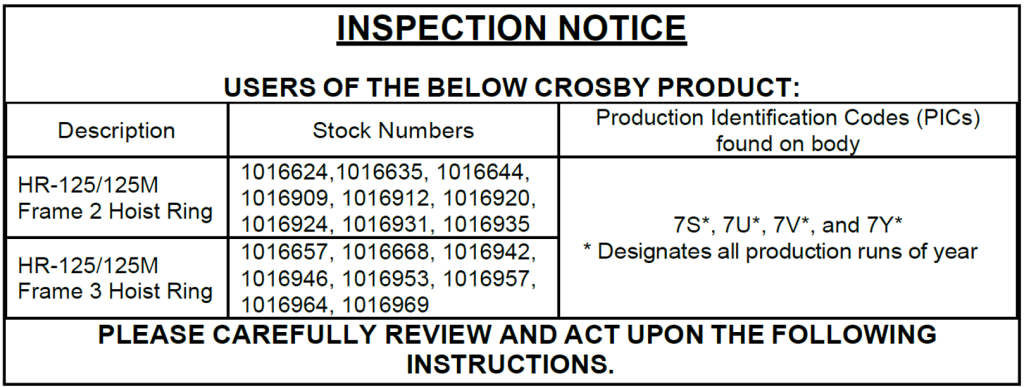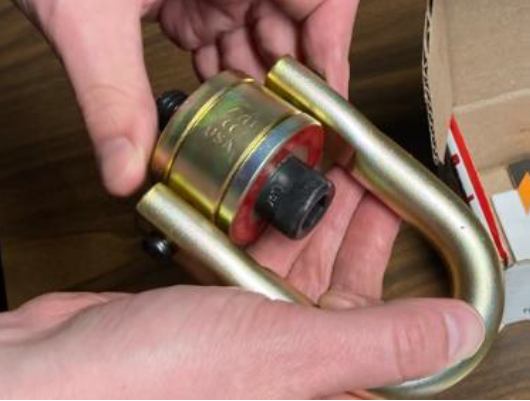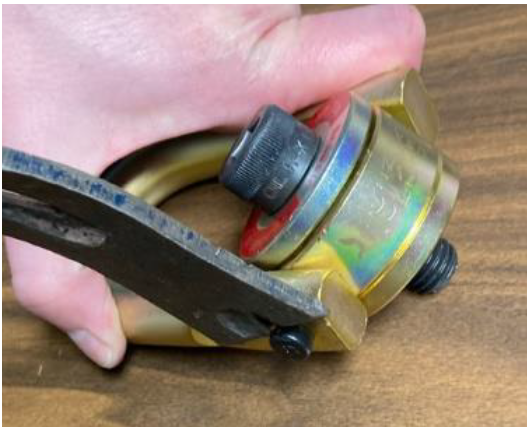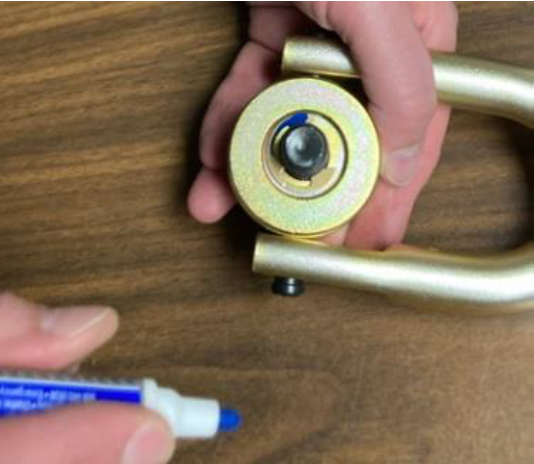Inspection notice from Crosby on certain products
The Crosby Group has asked that IMCA circulate the following information as part of a Safety Flash. Crosby has been made aware (March 2023) of a few instances of hoist rings that have an important assembly component missing. In those instances, the retaining pins used to secure the hinge pins were not in place and allowed a hinge pin to come out during unloaded condition. Internal testing has confirmed that these hoist rings can sustain the working load limit with only one hinge pin in place. However, Crosby recommends the listed hoist rings be immediately inspected to confirm the retaining pins are in place. The inspection is simple and can be completed quickly with the hoist rings installed and unloaded.

Crosby requests you perform the inspection on the above listed products with the listed production identification codes (PICs) found on the body. Crosby has prepared the below instructions to perform the necessary inspection. The inspection uses a small flat tool to gently pry the hinge pins outward, to confirm they are positively secured. If any hoist rings are found with inadequately secured hinge pins, please remove from service, and notify Crosby Technical Support at 1-800-220-8509 or [email protected] for immediate replacement.
Please inform your customer(s) of this Inspection Notice, or if you know of other users of the HR-125/125M Hoist Rings, please pass this notice on to that user, company, or firm. To ensure further circulation of this inspection notice to potential users of the products, it is being provided to safety minded industry organizations for posting on their safety notification sites.
We regret the inconvenience this may cause you and your organization and thank you for your cooperation. We are committed to providing you with the absolute best in Crosby quality.
Sincerely,
THE CROSBY GROUP

Locate hoist ring assembly and visually inspect for any issues.
Note: It is recommended to periodically inspect per Crosby Hoist Ring Warnings and Applications Instructions, and ANSI B30.26 Rigging Hardware.

The inspection can be accomplished by taking a small flat rigid object (such as a thin pry bar) that can be inserted under the head of the hinge pin and prying outwardly on the hinge pin.
Alternately, the inspection can be accomplished by grabbing the head of the hinge pins (with small pliers) and pulling outwardly while twisting.
A small amount of axial movement of approximately 0.04” (1mm) may be detected, but the hinge pins should not come out of the bail and body of the hoist ring. Additionally, the hinge pins should not rotate relative to the body. Perform the inspection on both hinge pins.

After the inspection, the hoist rings should have an identifier added, that indicates the inspection was performed and found to be acceptable.
In this case we placed a blue paint pin dot next to the E-Clip.
If any hoist rings are found with inadequately secured hinge pins, please remove from service, and notify Crosby Technical Support at 1-800-220-8509 or [email protected] for immediate replacement.
Safety Event
Published: 3 May 2023
Download: IMCA SF 11/23
IMCA Safety Flashes
Submit a Report
IMCA Safety Flashes summarise key safety matters and incidents, allowing lessons to be more easily learnt for the benefit of all. The effectiveness of the IMCA Safety Flash system depends on Members sharing information and so avoiding repeat incidents. Please consider adding [email protected] to your internal distribution list for safety alerts or manually submitting information on incidents you consider may be relevant. All information is anonymised or sanitised, as appropriate.
IMCA’s store terms and conditions (https://www.imca-int.com/legal-notices/terms/) apply to all downloads from IMCA’s website, including this document.
IMCA makes every effort to ensure the accuracy and reliability of the data contained in the documents it publishes, but IMCA shall not be liable for any guidance and/or recommendation and/or statement herein contained. The information contained in this document does not fulfil or replace any individual’s or Member's legal, regulatory or other duties or obligations in respect of their operations. Individuals and Members remain solely responsible for the safe, lawful and proper conduct of their operations.
